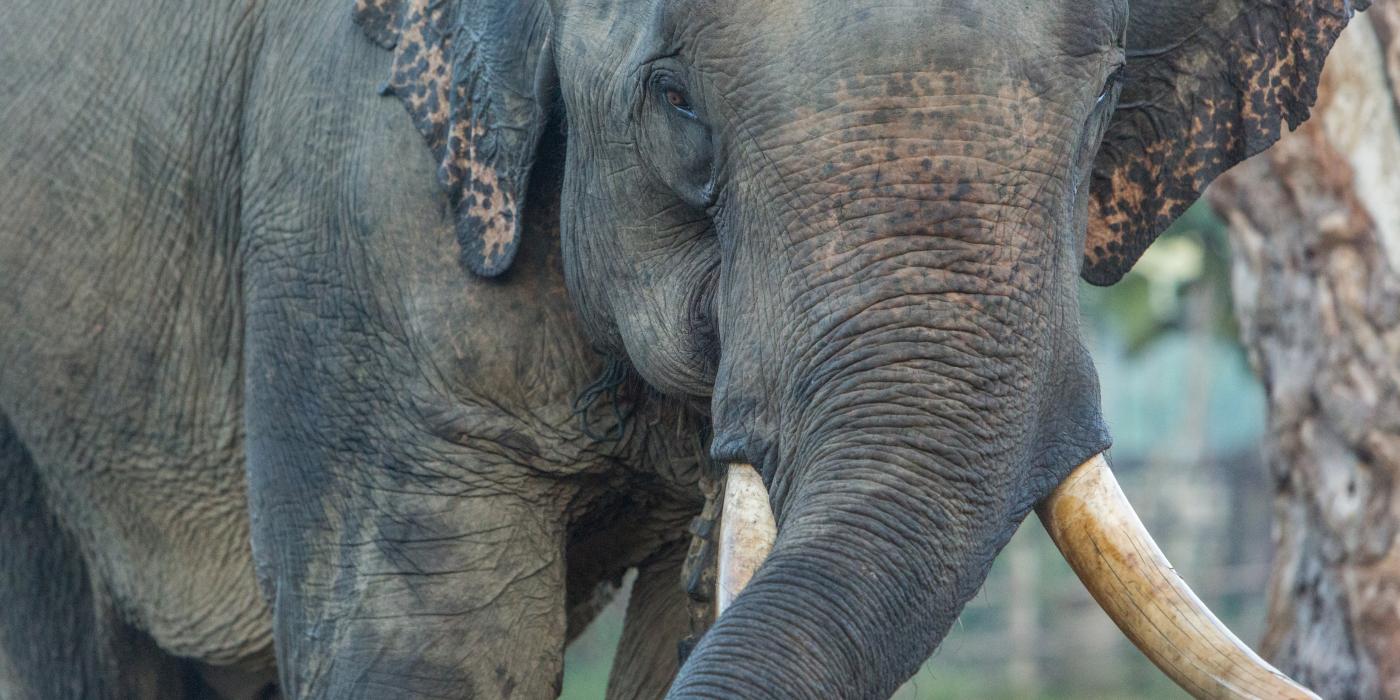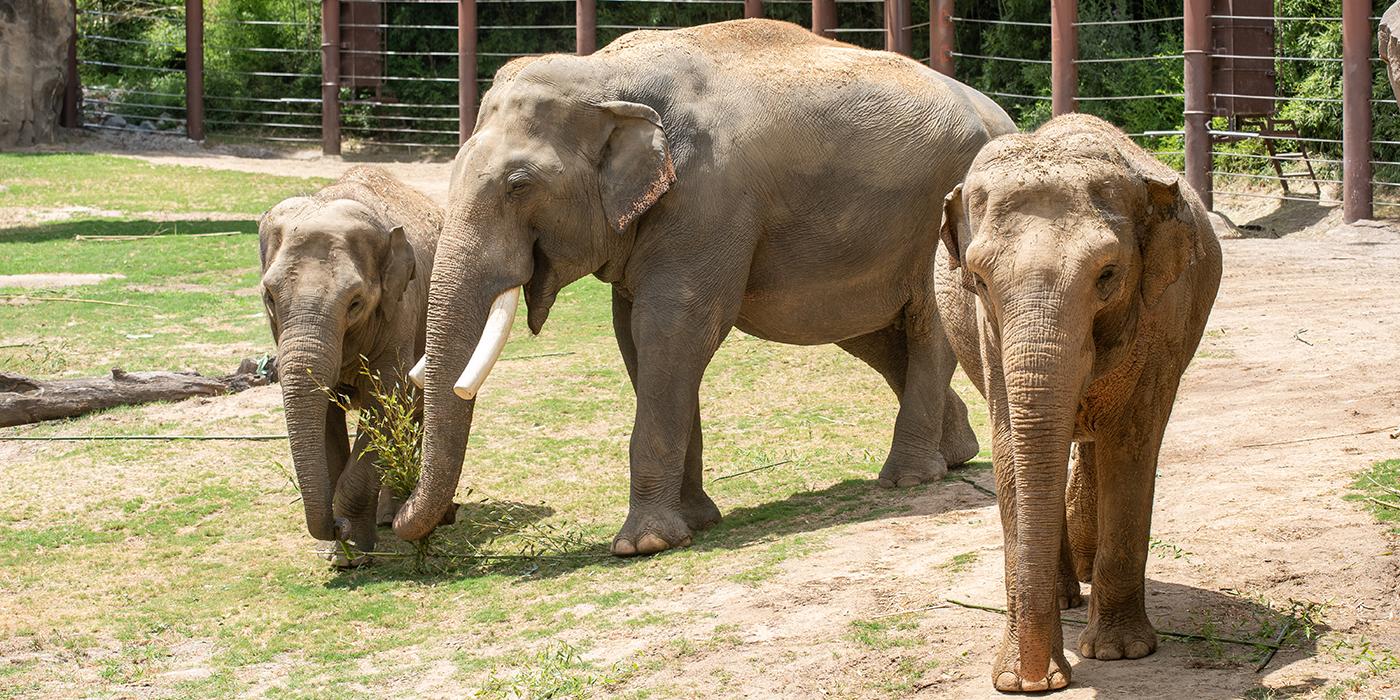Wild Personalities: Elephant Edition
Learn all about studying elephant personalities in this Q&A with Shifra Goldenberg, a research associate with the Smithsonian Conservation Biology Institute’s Conservation Ecology Center.
How did the idea to study elephant personalities come about?
One characteristic that is really apparent with elephants—and with many other species—is that they can exude a wide variety of personalities. They can be bold or shy, laid-back or short-tempered, curious or afraid, and the list goes on. Behavior is the first line of defense that wildlife use when they face a human threat, so understanding how individuals respond to new situations is quite important when considering how to approach conservation issues. These different personalities can have real-word consequences for wildlife.
As conservation challenges become more complex, we need creative solutions for people who live in areas where human-elephant conflict may occur. Across Asia, elephant habitat overlaps in areas where there is a dense human population and agriculture. Where there are farms, there is food—and raiding crops can spell big trouble for elephants and farmers alike. By knowing which elephants are more likely to be bold and take risks, we can be more targeted in our conservation planning and actions.
We are studying the behavior of elephants who currently work in a logging camp but are potential candidates for future release into the wild. If we can differentiate which animals are more likely to crop raid than others using behavioral screening and overlay that with what we learn about their movements from GPS tracking collars, then that information would really be useful for management decisions.
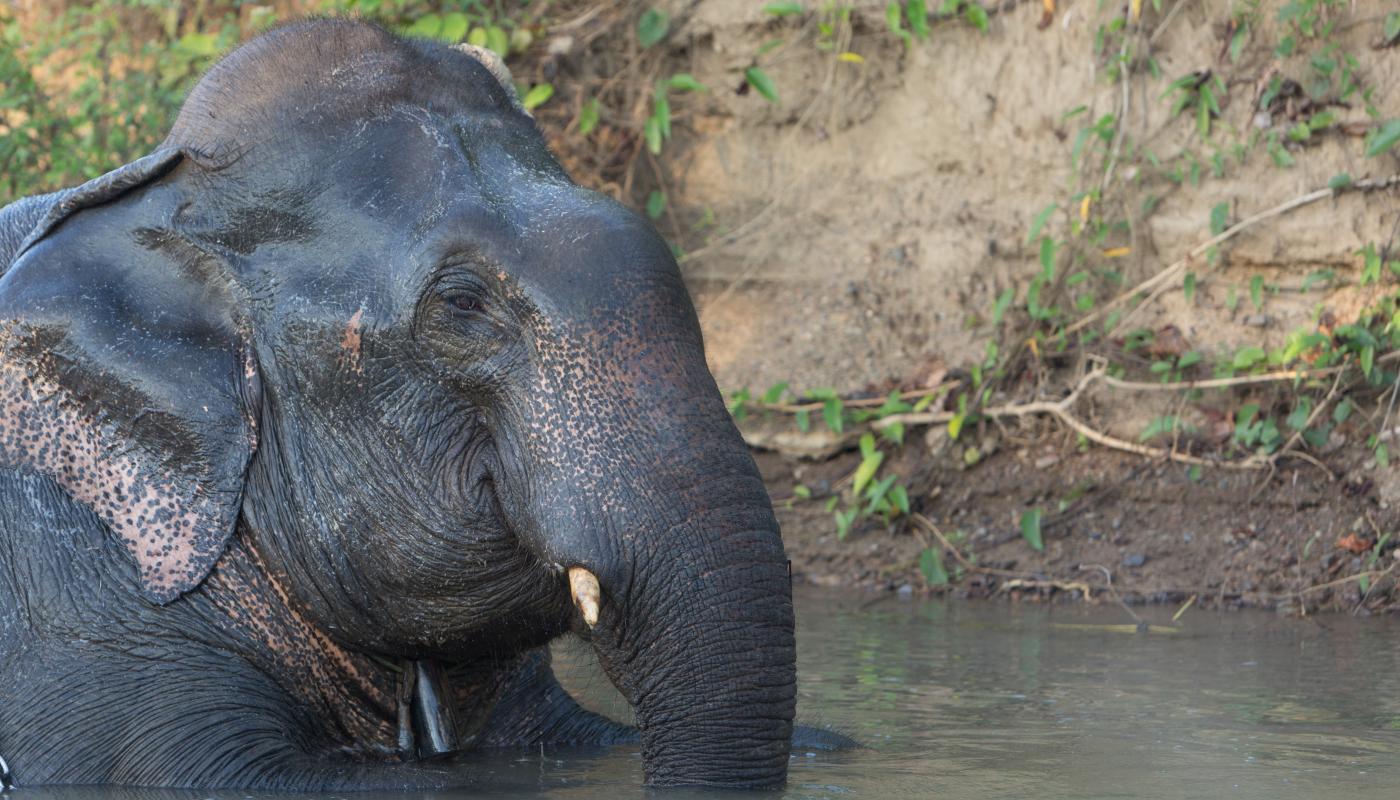
How do you determine what an elephant’s personality is like?
We do an experiment called a novel object test. We place an object that the elephant has never seen before in front of him or her, and we watch to see how they respond. We measure factors such as the length of time they spend interacting with the object, how much or how little interest they show in it and even if they show no response at all. This does not have to be limited to physical objects; for example, we can broadcast an audio recording and see if that elicits the animals to charge, run away or seek comfort from a friend. There is going to be a lot of variability in how animals respond based on the stimulus we are presenting to them.

What objects are you using in this study?
In collaboration with Joshua Plotnik, an animal behavior expert from Hunter College, we crafted puzzle boxes out of wooden crates and put some of their favorite treats inside—banana and tamarind paste rolled in salt. We also placed some treats on top to let them know it was ok to interact with the object. Once the elephant approached, we would record how extensively he or she explored the object and how much problem-solving they did. For example, did they go through the opening, shake the crate or crush it to get the treat inside? We can quantify the response from different individuals by noting the time devoted to the puzzle box and the techniques employed by the elephants.
How did the elephants respond?
We are recording lots of different behaviors across elephants. We had a few elephants who simply took the treats on top and did not explore the box further. At other moments, the elephants’ reactions were quite entertaining! One female spent 10 minutes exploring the box and getting all of the treats out. When there were none left, she took the box for the road and walked away with it. Another interesting encounter took place between an older and a younger elephant. They were working on the puzzle box together. When the young one was the first to get a treat, the older elephant shoved her out of the way to get better access to the box.
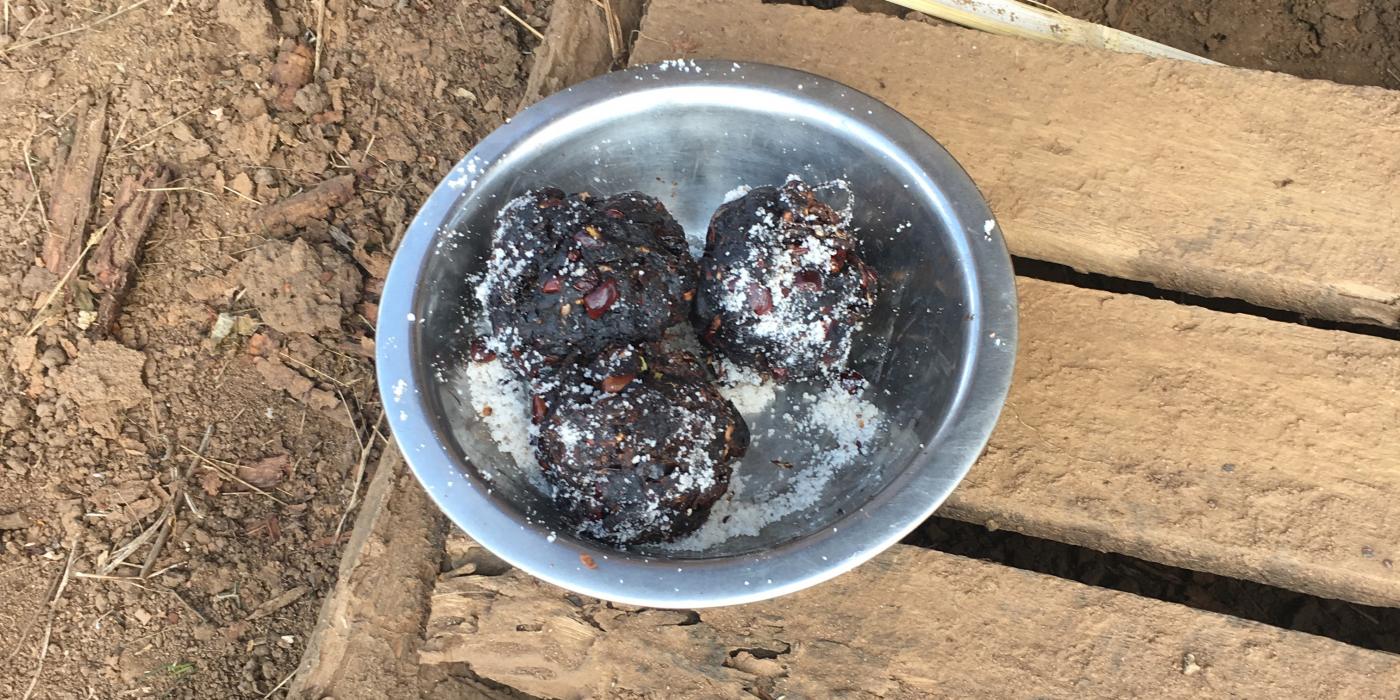
How many personality tests do you do with each elephant?
It depends on what information we are trying to learn. If someone tried to sum me up with one aspect of my personality, that really would not do me justice. The same goes for the elephants. It is important that we are gathering lots of different metrics to better understand how behaviors translate from one context to the next.
What is the ‘ideal’ personality of a re-introduced elephant?
That is what we are trying to find out. The answer would be whatever personality traits match to an animal that engages in minimal or no crop-raiding and is able to forage, survive and reproduce. One aspect that could be problematic for the logging camp’s elephants is that they are habituated and unafraid of people. We would want a re-introduced animal to be more wary of people so that they do not come into conflict.
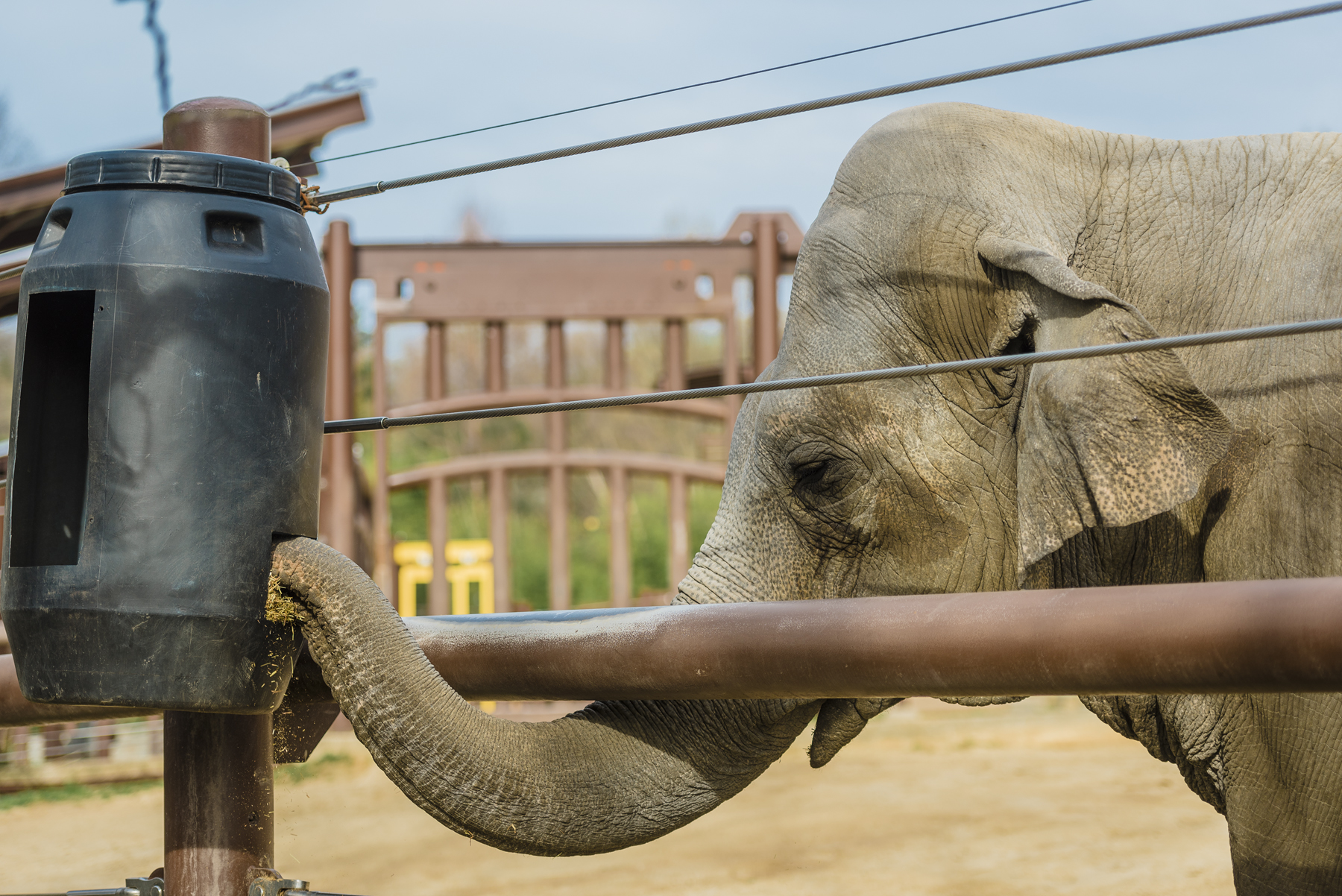
An Asian elephant at the Smithsonian's National Zoo pulls hay from one of the enrichment feeders.
How can the Zoo’s elephants help SCBI scientists develop this research protocol?
Elephant keepers have more insight about their animals than anyone, so we rely on them to share their knowledge about the animals’ personalities. We hope to work with the Smithsonian’s National Zoo’s keepers and elephants to test out a few puzzle box designs. We want to see how they respond to it; we will take what we learn from them to modify and improve the design. It would be a fun enrichment activity for the elephants and a valuable research tool for us to gain a broader understanding of possible responses.
This story appears in the June 2018 issue of National Zoo News.
Related Species:

